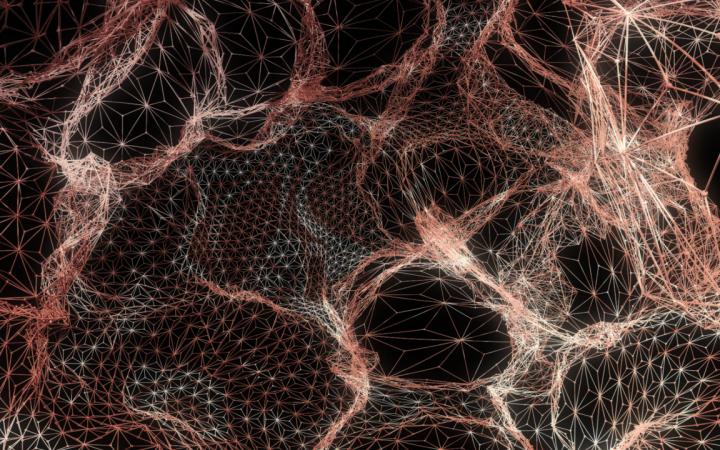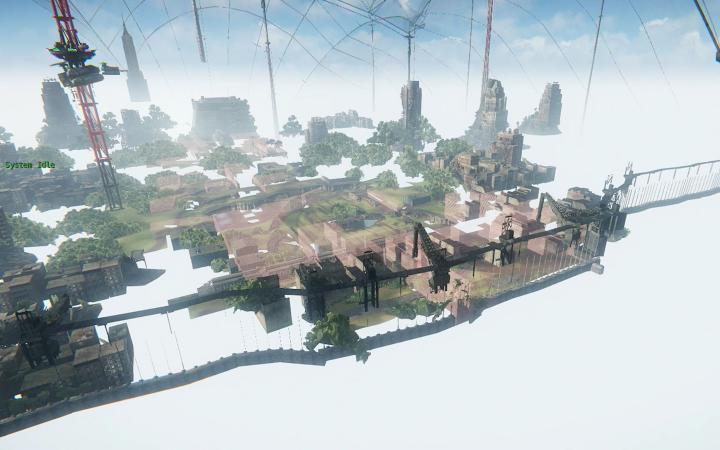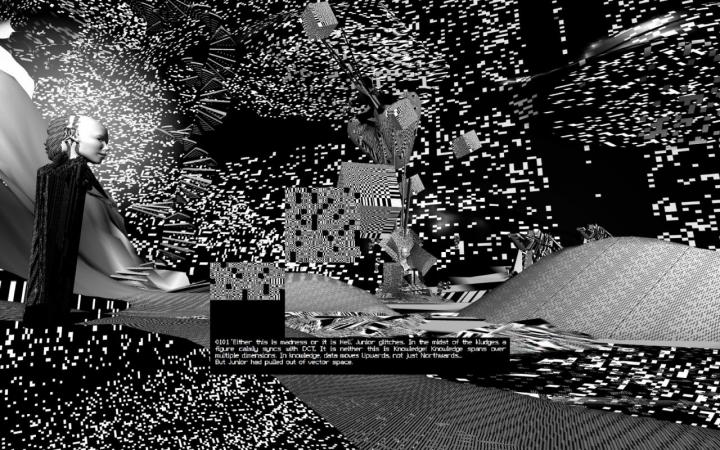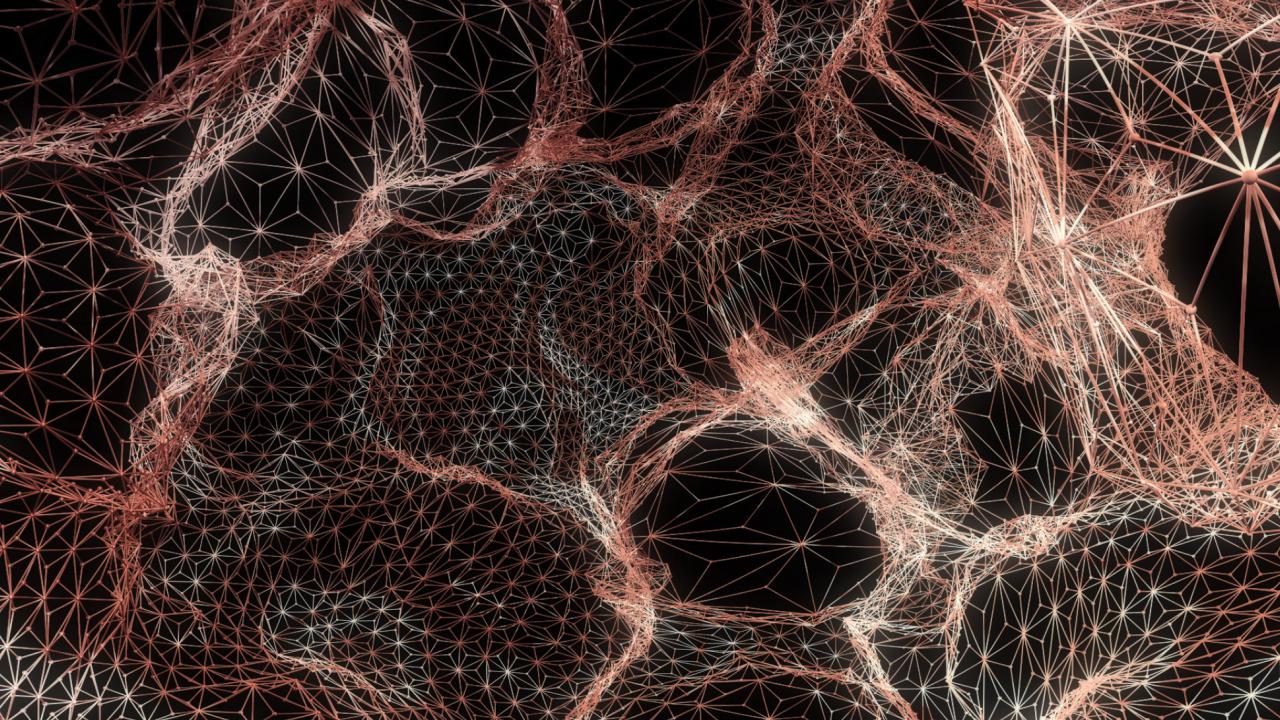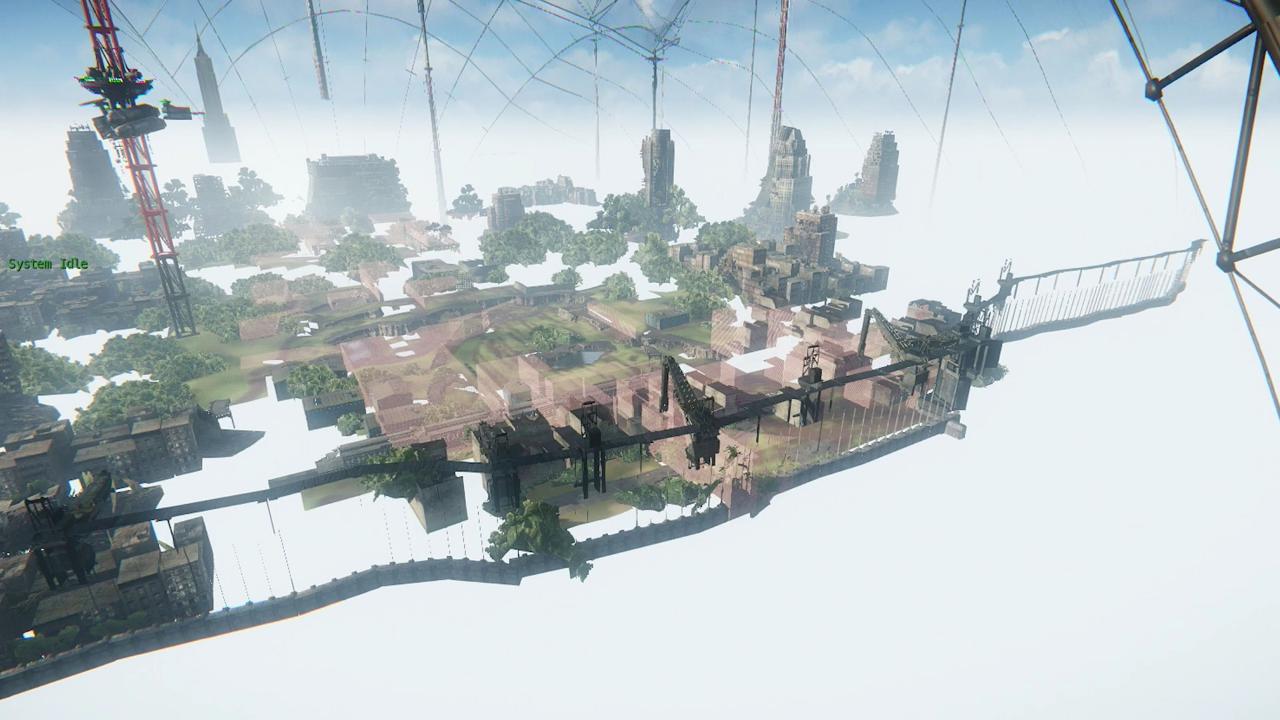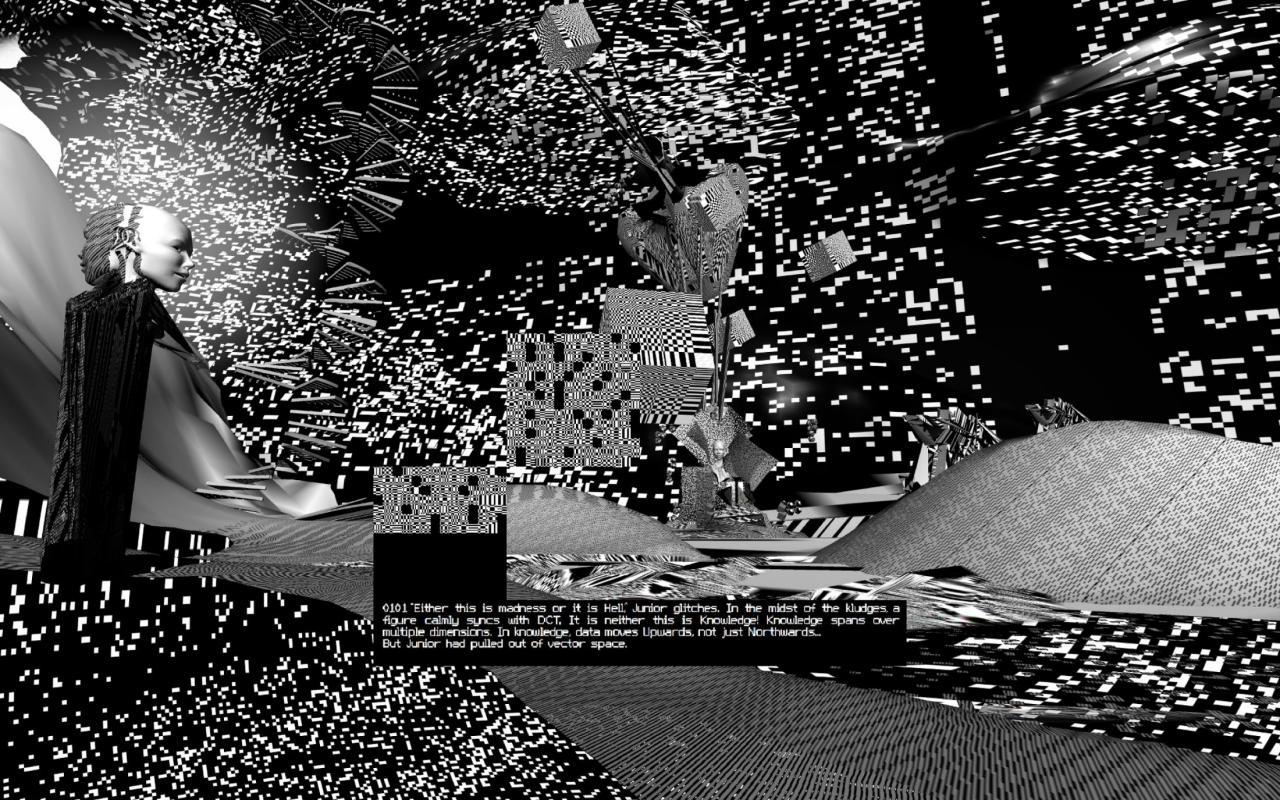#VirtualReality
#HMD #ComputerSimulatedEnvironments #AugmentedReality #ComputerGeneratedDesign #Escapism
To understand the significance of virtual and #VirtualReality in the present context let us take a closer look at the rise of current usages of these terms. Virtual reality (VR) is understood as a technical term, as a medium that reproduces spatial experiences for its viewers – experiences of and in spaces that do not physically exist and cannot be explored by touch, for example, especially when other visual stimuli are blocked out (for example, by headmounted displays, #HMD). In art, since ca. 1920, bodies that only appear to exist are referred to as virtual (e.g., Naum Gabo, »Konstruktion«, 1921). A rotating wire driven by an electric motor, for example, produces what looks like a three-dimensional figure on a disk. In the 1920s, experimental psychology and gestalt theory investigated this phenomenon in depth, for example, the stereokinetic effect. Kinetics and Op Art are its products. Since the term has been used in the context of computer technology the meaning relating to #ComputerSimulatedEnvironments has been added to most dictionary definitions as follows: simulated on a computer or computer network, or existing within a virtual reality. [1]
Thus we can conclude that »the virtual is a substitute – ›acting without agency of matter‹ – an immaterial proxy for the material. The term becomes a key marker of a secondary order in the relationship between the real and its copy, the original and its reproduction, the image and its likeness.« [2]
In philosophy Henri Bergson, Gilles Deleuze, Félix Guattari, and Pierre Lévy all developed various concepts of the virtual. Bergson describes the immateriality of memory as virtual. [3] For Deleuze virtual is not opposed to real, but to actual – in this understanding virtual is a mode of reality. [4] Guattari describes virtual as one of »four ontological functors« [5] – the virtual, the actual, the real, and the possible. The term »virtual reality« is relatively recent and was probably coined by Antonin Artaud in his book »The Theatre and Its Double,« first published in French in 1938. [6] Our current understanding of VR does not coincide with Artaud’s usage of the term; the meaning has shifted over the last decades, and now the term is predominantly used for computer-aided interactive and immersive environments, together with #AugmentedReality, that are accessed via screened images and in many cases additional devices (such as HMDs).
Artists and engineers began to experiment with the medium in the 1980s (Myron W. Krueger, »Artificial Reality,« 1983) and contributed to its development of #ComputerGeneratedDesign. Especially in the 1990s applications and artistic experiments using VR proliferated and resulted in artworks. Although at that time the technology was not sufficiently developed for wider usage, with the wider availability of the hardware and various software for it, in the last few years more and more artists have started to work with VR as a medium.
The medium offers complete visual immersion; it not only opens a window, as framed images do, as Leon Battista Alberti claims in his treatise »On Painting« (1435). The Art of Immersion, however, actually pulls the observer into the image and not only opens a window as painting and framed art works do. VR is a gateway through which viewers in the real world enter and leave the virtual world. VR literally opens a door into another reality.
In the gaming industry and in medicine the technology is already widespread. Virtual models help surgeons, for example, to identify the safest and most efficient way to locate tumors and place surgical incisions. Psychologists and other medical professionals are using VR to enhance traditional therapy methods and find effective solutions for treatment of posttraumatic stress disorder (PTSD), anxiety, and social disorders. Real estate businesses and architects accompany their possible tenants or building contractors on walk-throughs of as yet nonexistent buildings. VR technologies are becoming ubiquitous, not only because of the supreme #Escapism the medium offers, but also because of its practical and commercial potentials.
Lívia Nolasco-Rózsás
[1] See Webster’s »Third New International Dictionary,« unabridged edition, Merriam Webster, 1993.
[2] Anne Friedberg, »The Virtual Window: From Alberti to Microsoft,« The MIT Press, Cambridge (MA), London, 2006. p. 8.
[3] See Henri Bergson, »Materie und Gedächtnis. Eine Abhandlung über die Beziehung zwischen Körper und Geist,« introduction by Erik Oger, trans. Julius Frankenberger, Verlag Felix Meiner, Hamburg, 1991, p. 127.
[4] Manuel DeLanda provides a comprehensive explanation of the process that Deleuze calls counter-actualization (moving from the actual to the virtual); see Manuel DeLanda, »Intensive Science and Virtual Philosophy,« Continuum, London, 2002.
[5] Felix Guattari, »Chaosmosis: An Ethico-aesthetic Paradigm,« trans. Paul Bains and Julian Pefanis, Indiana University Press, Bloomington, 1995.
[6] See Antonin Artaud, »The Theater and Its Double,« trans. Mary C. Richards, Grove Press, New York, 1958, p. 49.
Article
-
History of Virtual Reality
Virtual Reality Society
-
What is Virtual Reality?
Virtual Reality Society
-
A Brief History of Video Game Virtual Reality, and Why This Time Will be Different
Robert Workman
-
The Virtual Window: From Alberti to Microsoft
Anne Friedberg
-
Intensive Science and Virtual Philosophy
Manuel DeLanda
-
Intermedia Stages of Virtual Reality in the Twentieth Century: Art as Inspiration of Evolving Media
Oliver Grau
-
Virtual Art: From Illusion to Immersion
Oliver Grau
-
Introduction to Virtual Art: From Illusion to Immersion
Oliver Grau
-
Virtual Reality
Devendra Mishra
-
Augmented Reality Art: From an Emerging Technology to a Novel Creative Medium
Vladimir Geroimenko (ed.)
-
From Technological to Virtual Art
Frank Popper
Videos
What are Virtual and Augmented Realities?
7:32 min.
Science Documentary: Augmented Reality, Virtual Reality, Wearable Computing
51:55 min.
Virtual Reality – Revolution im Wohnzimmer?
The Virtual Reality Revolution: Its History and Future
43:19 min.
